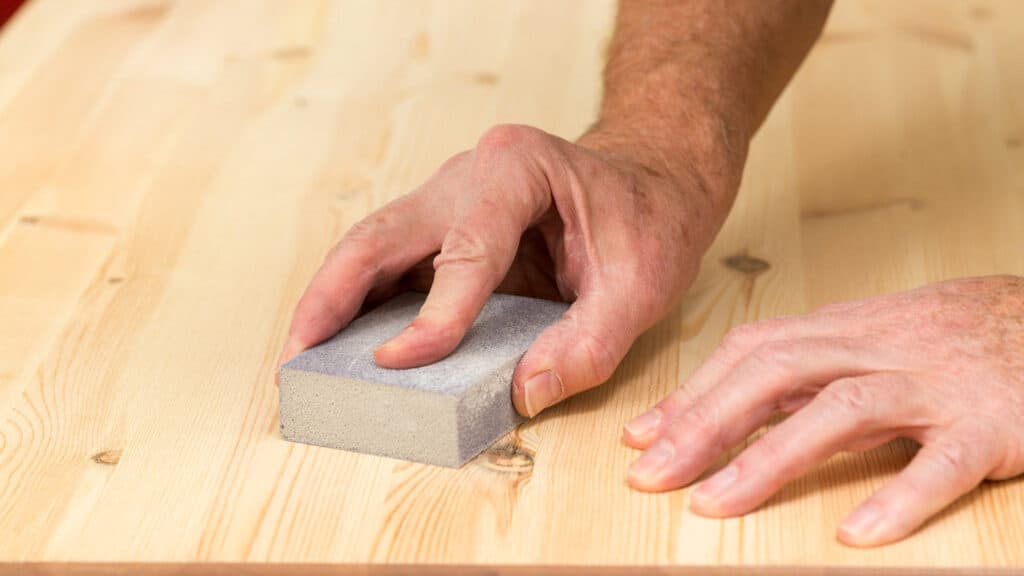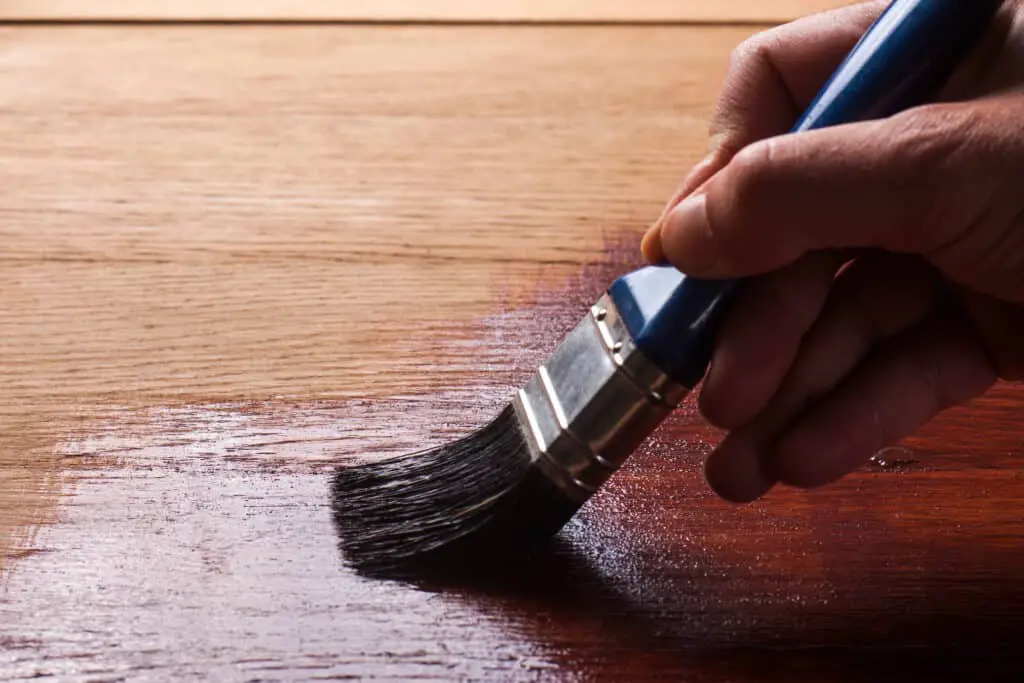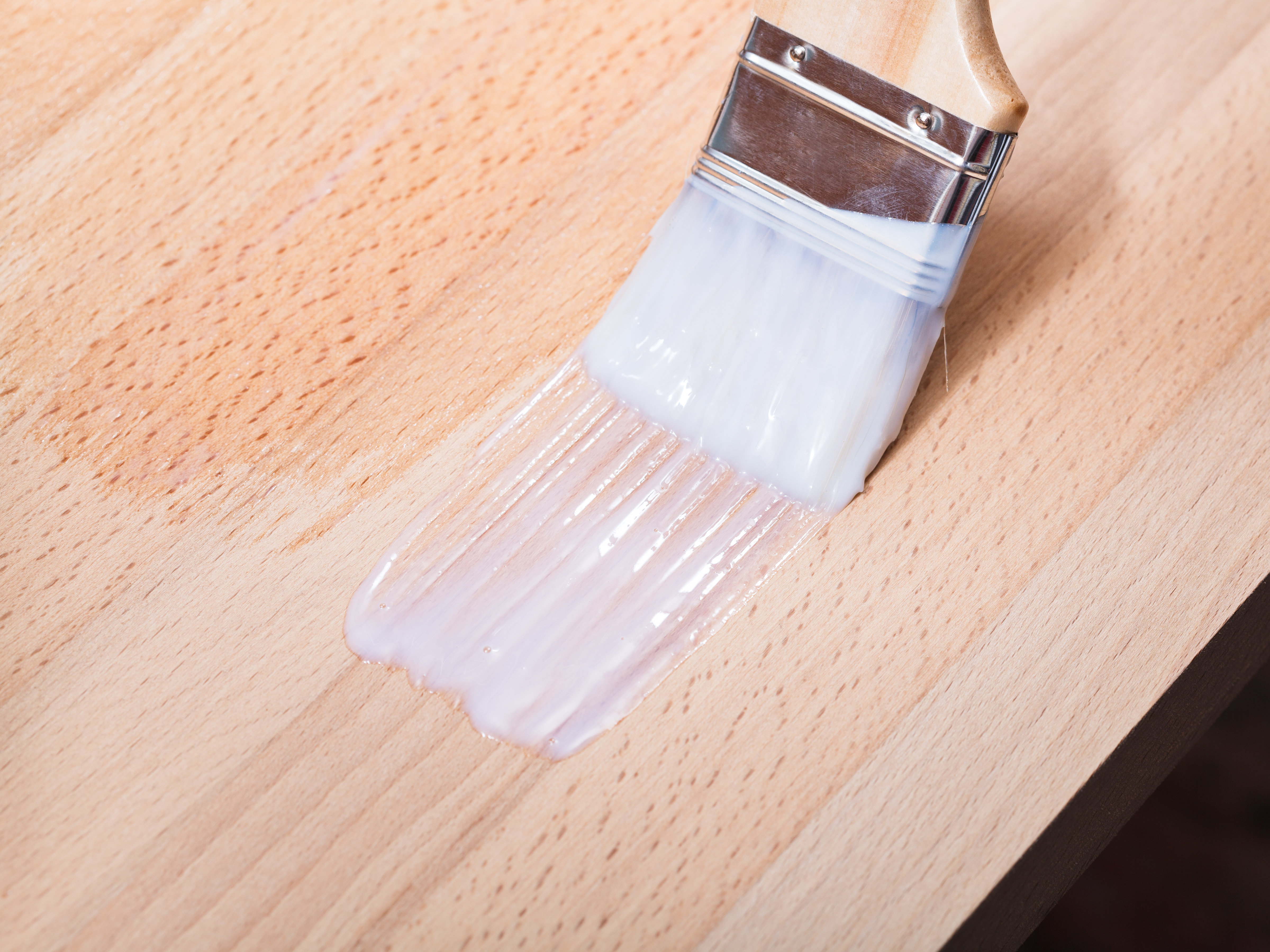Applying a finish to wood surfaces is an important step in protecting your furniture. Finishing wood helps bring out the natural grain, protect from swelling and cracking, and enhance durability.
The best finish for dining tables is lacquer. This finish will both bring out the beauty elements of dining tables and provide needed protective properties. Lacquer is applied in thin coats which allows a natural accent of the wood itself. This finish is durable and water-resistant.
Restoring or refinishing older wooden furniture brings out the beautify and warmth of the piece for your home. There are 2 main types of finish to consider that can be used. These finishes vary in content and purpose along with time and costs.
The huge variety of finishes for furniture is one of the subjects we will be diving deeply into during our live online workshops at Cucamonga Woodworking and you can check out our past workshop YouTube videos Here(Link to Cucamonga Woodworking)
Stains
Choosing a finish can be challenging since there are pros and cons to all of them. Regardless of your choice, it is important to add a stain to your shopping list.
Many companies have created a stain and sealant mixture typically consisting of a Polyacryllic mixture (Polyurethane and Acryllic). These come in a small variety of gloss finish and the color cannot be tailored to your liking since the primer/stain is mixed in.
These 2-in-1 mixtures do cut down significantly on drying time and labor since only 1 coat is typically being applied.
If you would like to choose/control the color of your wood, it would be best to choose a stain separate from your finish. This allows flexibility in color and the ability to re-sand/perfect a piece before putting on the finishing coat.
Consider which kind of finish you will be using when deciding on a stain since some will not penetrate or work well together.
Porous wood would also need an extra step in this finishing process called conditioning in order to achieve the best results for your dining table since they are typically susceptible to dark spots.
Porous woods include alder, basswood, birch, buckeye, maple, willow, aspen, cottonwood, and poplar. These woods just need to be sanded, have a conditioner applied, and then stain and finish applied. This allows the stain to penetrate better.
Types of Finish
There are 2 categories of finishes that can be used for your dining room table: Surface finishes and penetrating finishes. The difference between the two is evident in their names.
Surface finishes stay on the surface of your wood furniture and provide a protective barrier to scratches. They dry on top of the wood and are good for pieces with a lot of wear. Penetrating finishes are absorbed by the wood and still provide a protective coating on top to help with durability.
When considering what finish to choose, be conscious of the time and effort you are willing to put into maintenance. Many of these finishes can also be layered to benefit from their combined properties of durability, color, and accents.
Choose a finish that will provide the proper protection to ease the need for refinishing in the future.
Multiple coats of a finish might need to be applied to a dining room table depending on if there are bubbles from the application, nicks in the piece missed during the first sanding, etc.
The thicker a topcoat is, the more durability and protection the piece has acquired. No matter the finish used, the application of multiple coats will allow for a more solid barrier to dropped plates or silverware.
Paint:
Paint is considered a basic surface finish but is not a natural wood finish that would most likely be desired for a beautiful dining room table.
When choosing to use paint on your dining room table, consider using a primer separate from paint. Many companies now have paint advertised with primer already mixed in. This is to save time and effort in completing a piece, but the color suffers.
Especially if doing a piece for an accent color that you want to stand out, it is important to protect the integrity of the furniture and allow the true tone to shine through by using an appropriate primer. There are primers available that help to keep furniture resistant to other decaying features like mold and mildew.

Many do not understand that priming is the most important part of a piece and the finish is just the last step.
Lacquer:
Lacquer is also a surface finish. It will dry relatively quickly, averaging around half an hour. It provides a very durable coat for furniture and finishes to a high gloss shine. Over time, it does discolor and will require some maintenance over the years.
Lacquer will be a great finishing topcoat for a dining room table since the durability allows for accidents without harm to the wood.
How to Apply Lacquer:
Use only aerosol spray lacquer when coating your furniture. Make sure to protect your working area with drop cloths or newspaper to avoid any unwanted damage.
It is important to make sure the area is well ventilated since you will be using chemicals that can cause health issues if not properly used.
Shellac:
Shellac is a surface finish that will also allow wood to have a high gloss finish and adds a layer of protection. It dries quickly, which can be a time saver. Since Shellac is sensitive to heat, it is not recommended for dining tables or furniture that will be serving prepared food.
Alcohol-based liquids are also dangerous to this finish. Some mixtures with another finish might do well to compensate for what shellac lacks in durability.
French Polish Shallac Technique:
This technique involves using a mixture of both Shellac and oil finishes. You will need a rag to dip, but not soak, with the oil/shellac mixture and work into the wood through circular motions.
Cover the entire piece with downward pressure. Make sure the table has adequate time to dry, typically 24 hours+.
Polyurethane:
Polyurethane is considered to be a penetrating finish that is absorbed into the wood. Its finish dries into a satin to dull-gloss covering for wood furniture. Most experts recommend mixing it with another finish to gain a better shine and durable protection. This is a type of Varnish finish.
If polyurethane is being used separate from any others, multiple coats will be needed to allow for an effective protective coat.
There are 2 different bases for polyurethane including oil-based and water-based. Water-based has the advantage of lifespan, color, and durability, whereas oil is more resistant to heat and chemicals.
Wax:
Wax is a great option if focusing on beauty and shine. This option is a surface finish that is used as a topcoat usually mixed with oil since it does not enhance the wood at all on its own. It preserves the wood’s natural color.
Wax has the added advantage of not yellowing over time and is non-sticky. It is applied by using a new, natural bristle brush along the grain of the wood to ensure an even and thorough coat.
Wax is not a good option to finish alone for a dining table since it will not add a restorative look to the table. It does not do well against scratches, dents, or excessive heat from serving food.
Wax does do extremely well when mixed with other finishes to make up for the protective areas it lacks.
Oils:
Oils are a penetrating finish that will enhance your dining table. They are a great finish to use on wood because of their natural and rich texture/color balance effect. Oils are preferred by many professionals because of their ability to accentuate natural wood beauty.
There are different kinds of oil used for finishes including tung oil, linseed oil, and danish oil. Tung and danish are the most recommended oils since they require fewer reapplications compared to linseed.
When using an oil finish, only water-based stains should be used. If both your finish and stain are oil-based, then the mixture will interfere with each other, causing undesired coloring.
Wax needs to be applied onto furniture with a rag or pad, not a brush. This will give it the best look and smooth texture.
The setbacks of using oil are that it can yellow over time and requires additional refinishing to maintain over several years. Your table will only have some resistance to water and other liquids but it is flexible with the wood as it changes due to humidity.
How to Refinish a Dining Table

Starting a refinishing project can seem daunting. These simple steps will help you complete your project and your desired look for the wood. There are a few materials needed to achieve optimal results: Sandpaper; clean cloth; a new, natural bristle brush or clean rag for application; and your chosen stain and finish (Source).
Step 1: Clean the Wood
Sand down the entire surface that you are wanting to refinish. The deeper the scratches or imperfection, the larger grain of sandpaper you will want to use.
Make sure to smooth the entire surface and clean off any residue with a clean rag. The furniture piece needs to be completely clean before applying a stain or finish.
Step 2: Brush on the Stain
Use a new, natural bristle brush or rag to apply the stain on the table. The stain will be absorbed into the wood and bring out its color and natural grain. Apply one coat of the stain and follow the manufacturer’s directions. Allow the stain to dry completely before applying any finish.
Step 3: Brush on the Finish
Evaluate if there are any imperfections or bubbles from the application. Re-sand those parts, if necessary, being careful to clean any residue each time. You may need a second coat of finish.
Allow the first coat to dry completely before applying any subsequent coats, continually checking if sanding is necessary and doing so. Once you have the desired look, allow for the piece to dry completely before placing back in your home for use.
Be proud of your furniture piece! Take a picture of the before and after to see the difference that work did and the beauty of your newly refinished table.
Supplies
Most local hardware stores will carry the supplies needed to refinish a dining room table. The most commonly used products include a sanding block or sanding paper. Make sure that you are buying an appropriate grain for the furniture.
The deeper the cuts or chips in a piece, the higher a grain count is needed in order to smooth out these imperfections. If your table is already smooth, sanding can be quick with a smaller grain count.
Rags and cloths are needed throughout your finishing project for clean up, protection, and application. Most hardware stores carry a selection of rags and pads that can be used for applying stains, finishes, or cleaning.
The most recommended tool to apply finishes is a natural bristle brush. Always use a new brush, as it will give the best brushwork for your tabletop.
Make sure to buy drop cloths large enough to cover any areas that could be affected by the chemicals used in your project.
Protective gear for your skin and eyes should be worn at all times while properly following the manufacturer’s guidelines. Protective eye goggles, face masks/respirators, and gloves are a few essential items to protect against these aggressive chemicals.
Costs Associated with Finishing Wood
The largest cost contributor to your project will be the stain and finish. Depending on how large your tabletop is, the more or less stain or finish you will need to use.
Taking cost into consideration when deciding which brand to buy or how many rags or supplies are needed can save money in the end.
Typically, a quart-sized finish should cost around $15, stains landing around $8, and brushes around $2 each. Rags and pads will be about $5.
Since brush on lacquers are highly discouraged for amateur use, it is easiest to buy a spray-on lacquer. This does not increase the cost much since spray cans are available to use. Hardware stores do sell larger spray guns that chemical mixtures can be loaded into if large enough projects require them.

